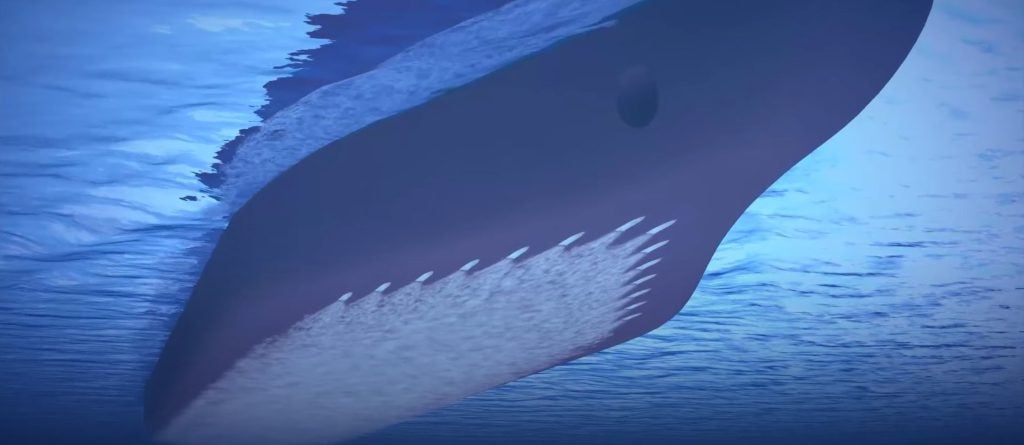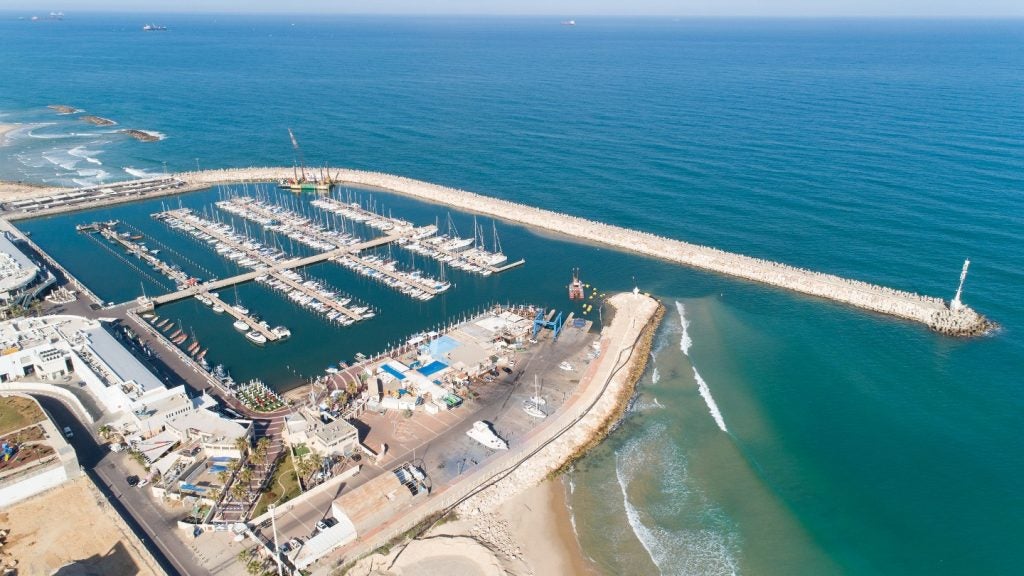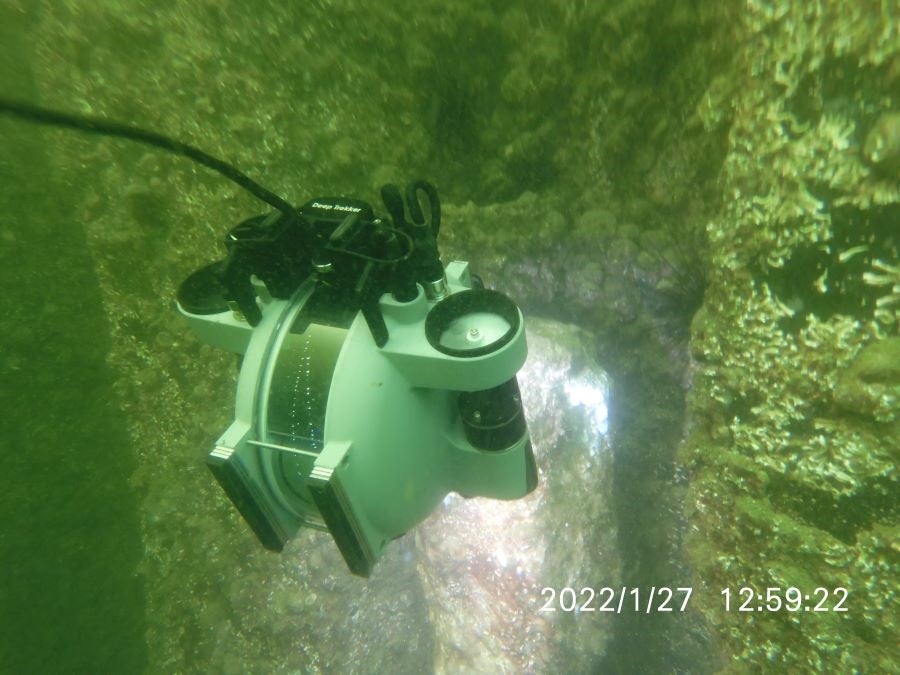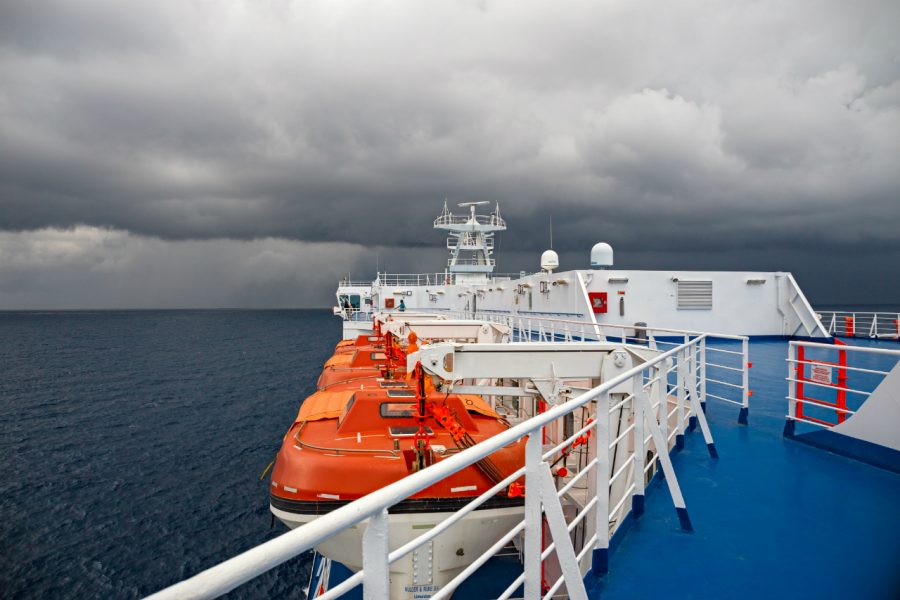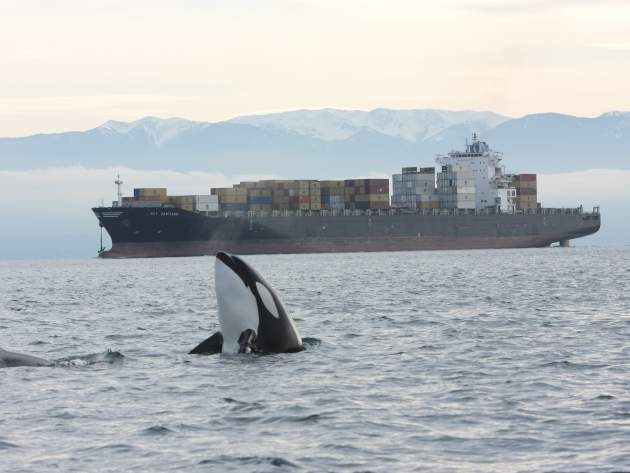

The shipping industry and the bodies that regulate it have slowly wised up to the damage caused by unrestricted marine emissions. But there’s another shipping emission whose effects are much less well understood, and the regulation of which is at a much earlier stage than the likes of CO2, sulphur oxides and particulate matter.
Noise generated by shipping traffic, as well as other offshore and coastal human sources, has been demonstrated to have impacts on marine life – from marine mammals and fish to invertebrates – but until more comprehensive data is gathered and we have a better grasp on the interactions between man-made acoustics and underwater wildlife, these impacts will remain unknown.
The European Union (EU), which has taken a leadership position in the field by categorising underwater noise as a general marine pollutant under its Marine Strategy Framework Directive, acknowledges the data deficit.
“The effects of underwater noise are not fully understood,” reads a European Commission fact sheet. “One reason for this is that only for a few species of mammals and fish [have] tests been performed to identify hearing range and sensitivity. But even if an individual hears the noise, we are not sure how it will react or what damage will be done.”
See Also:
The bigger picture on underwater noise
To combat this information shortfall, larger-scale underwater noise studies in Europe have been ongoing. A broad partnership of countries bordering the Baltic Sea conducted the Baltic Sea Information on the Acoustic Soundscape (BIAS) study between 2012 and August last year, providing valuable information on the region’s acoustic interactions and developing the first standards for underwater recording of ambient noise.
How well do you really know your competitors?
Access the most comprehensive Company Profiles on the market, powered by GlobalData. Save hours of research. Gain competitive edge.

Thank you!
Your download email will arrive shortly
Not ready to buy yet? Download a free sample
We are confident about the unique quality of our Company Profiles. However, we want you to make the most beneficial decision for your business, so we offer a free sample that you can download by submitting the below form
By GlobalDataIn the UK, meanwhile, the Centre for Environment, Fisheries and Aquaculture Science (Cefas), an agency of the Department for Environment, Food and Rural Affairs (Defra), has formed a coalition with several organisations and academic institutions to develop a bigger picture of subsea noise in UK waters.
The initial partners – comprising Cefas, Marine Scotland Science and the University of Exeter – collected data at a range of sites around the UK coastline in 2013 and 2014, to get a better overview of the acoustic situation on a wider scale for the first time. The results of the study were revealed in November last year, in the article ‘Underwater noise levels in UK waters’, published by the Nature journal.
“We were obviously aware that the English Channel is a major shipping lane, and there have been a few studies around different coastal sites in the UK showing that shipping noise as well as other sources were contributing to underwater noise levels,” says Cefas principal scientist for noise and bioacoustics Dr Nathan Merchant, who was the lead author on the study. “What we didn’t have was longer-term measurements and broad spatial coverage of the UK. So this is the first study to achieve that.”
UK underwater noise: mixed results
The study’s findings revealed a relatively wide array of underwater noise conditions around the UK, with results both encouraging and concerning. Relatively high noise levels in the North Sea came as little surprise due to heavy shipping traffic, but the University of Exeter’s noise monitoring station in the Celtic Sea recorded relatively little noise, despite being located just 15km from a major shipping lane.
“It may well be to do with the particular topography of the seabed [at the Celtic Sea site], and the properties of the environment,” says Merchant. “But relatively speaking, the Celtic Sea was quiet, and in the southern and northern North Sea there was rather more noise. In the Inner Moray Firth, there was also relatively low noise levels, and that’s quite good news because it’s a Special Protection Area for some marine mammals. So that was reassuring.”
Though the study’s findings are interesting in themselves, Cefas considers them to be the start of a much larger ongoing project to establish permanent underwater noise monitoring around the UK, bringing in more partners in the form of the University of Bangor and the University of Newcastle, while Cefas sets up new stations in the southern North Sea and the English Channel. The recent results will form a vital benchmark to help build a picture of whether noise levels are improving, deteriorating or remaining static over time.
“We’ve been talking a lot with our partners at the universities and drawing up agreements,” says Merchant. “The plan is to commence monitoring next financial year, so in April 2017.” One of the major conclusions from the Cefas study was a statistical analysis revealing that detecting subsea acoustic trends will require several decades of data acquisition and analysis, necessitating a permanent monitoring network to gather the evidence and crunch the numbers.
Shipping’s noisy footprint
While commercial shipping is considered to be the largest contributor to underwater noise in most regions (certainly in the UK), other sources such as onshore industrial activities, fishing and acoustic deterrent devices have been cited as well. So what is the scope and geographic footprint of shipping-specific noise in the UK?
Automatic identification system (AIS) data reveals the major shipping routes around the UK – first and foremost through the English Channel and the Dover Strait – but also with significant movements up and down the east and west coasts of Britain and around the tip of Northern Ireland, which is where shipping noise is likely to be loudest.
Man-made underwater noise can broadly be separated into ‘impulsive’ noise (i.e. sudden and intermittent) and ‘continuous’ noise, which is primarily associated with the constant hum of ship engines as they pass over the sea’s surface.
While specifics will take time to emerge in detail, potential negative impacts caused by this kind of underwater noise include so-called acoustic masking, whereby propulsion noise drowns out or reduces the range of the acoustic communication used by marine mammals and certain fish species. Fish species with schooling behaviours may also be disrupted, as persistent noise may interfere with contact calls, splitting groups into smaller schools with lower efficiency when it comes to finding food.
“Other effects are things like inducing physiological stress, so disturbance from the presence of a ship or ship noise can heighten the physiological stress levels, and that has long-term consequences for health, as it does in humans,” Merchant adds. “In the terrestrial environment, we’re aware that traffic noise, for example, has long-term effects on cardiovascular health and so on, through raised stress levels. It’s a similar idea.”
Acoustic focus: driving global change
Although broad legislation on shipping noise is still a ways off, there are ways in which the shipping sector can reduce its acoustic impact on the marine environment. The International Maritime Organization (IMO) released guidelines on ‘ship quieting technologies’ in 2014, and as Merchant elaborates, the main emphasis should be on muting the racket created by ship propeller cavitation, or the bubbles of steam created as the vessel’s propeller generates pressure against the water. When these bubbles collapse, the noise created covers a wide frequency range, potentially increasing the acoustic masking effect.
“Reducing cavitation through propeller design and through the design of the hull specifically to reduce turbulence going into the propeller are ways in which cavitation noise can be reduced,” Merchant says. “Economically speaking, if that happens at the design stage, that’s the most cost-efficient way to do it. Retro-fitting is obviously going to be more expensive. You can also reduce engine noise with better vibration isolation of the hull, for example.”
But where are the drivers for wide-scale industry change on underwater noise going to come from? Merchant highlights some individual examples of regions encouraging change in this field, citing Canada’s Port of Vancouver in particular, which he says is considering incentives, such as reduced port fees for quieter vessels, to help protect nearby orca populations, with hydrophones installed on the approach to the port to monitor the acoustic characteristics of incoming ships.
Some industry change could be derived from making the business case for quieting technologies, which could, Merchant says, bring associated environmental and economic benefits to vessel operators. “Quieter propellers tend also to be more efficient, so there are knock-on benefits in terms of CO2 reduction and cost savings as well,” he says. “So they may well come as a package of beneficial measures.”
In the end, however, co-ordinated international action will be required to apply any legislation evenly, as “no trading nation would want to put themselves at a disadvantage by having a big difference in their environmental standards,” Merchant notes. Although any potential emission control area-style protected zones for underwater noise would be years off, Merchant believes “measures along those lines are within the realm of possibility”.
Given that international mechanisms and institutions such as the EU, the IMO and the OSPAR Convention will play a key role moving forward, could the UK’s upcoming exit from the EU hamper its ability to feed into the evolving international conversation on underwater noise?
“It’s important to realise that the EU isn’t the only forum through which we cooperate,” Merchant asserts. “OSPAR in particular is a very important coordination forum for us. Regardless of whether we’re in the EU or not, we’ll be coordinating with our European partners, and partners within OSPAR, to ensure that our approach to this is as joined-up and coordinated as is reasonable.”



